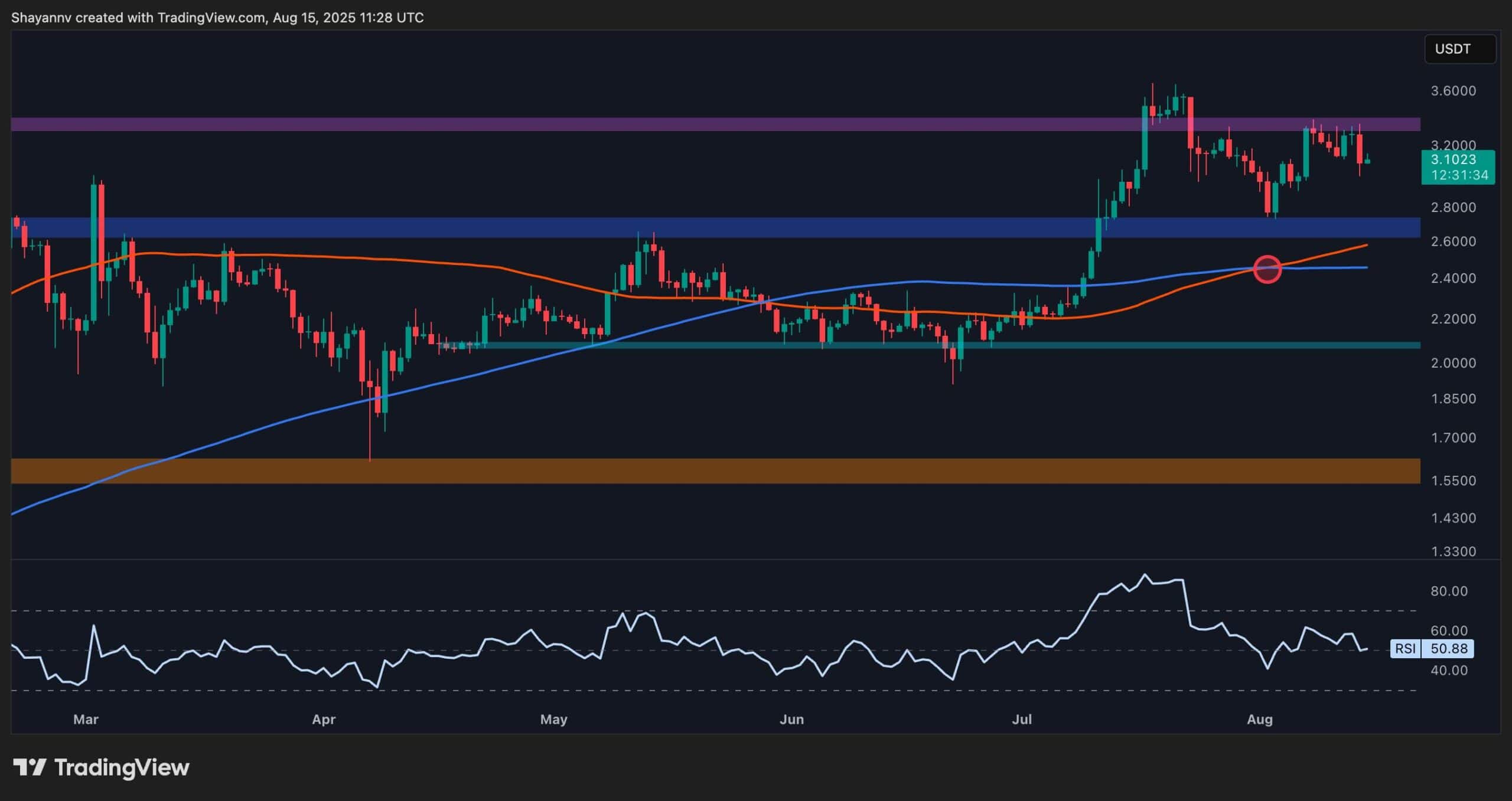Cryptocurrency
Bitcoin miners seek alternative energy sources to cut costs

During the 2021 bull market, many large mining companies took on massive loans to buy equipment and the proper infrastructure required to mine cryptocurrency. Yet the collapse of crypto exchange FTX and Celsius left many of these companies filing for bankruptcy.
The current bear market, coupled with high Bitcoin network hash rates and low profits, has yet again left the crypto industry wondering if miners will be able to recover from losses. While this remains questionable, it’s become evident that mining companies today are focusing more on alternative energy resources to cut costs, ensure profits and, in some cases, reduce their environmental impact.
Alternative energy sources used by miners
Steven Lubka, managing director for Bitcoin-focused financial services company Swan Bitcoin, told Cointelegraph that while the average rate to mine a single Bitcoin (BTC) is around $26,000, mining companies focused on renewable energy sources are seeing rates between $5,000 and $15,000 per BTC.
A spokesperson for Riot Blockchain, a United States-based publicly traded Bitcoin mining company, told Cointelegraph that wind and solar energy generated across Texas has helped Riot ensure some of the lowest costs to mine crypto. “As stated in our Q2 investor deck, it costs Riot $8,389 to mine 1 Bitcoin,” he said.

Kent Halliburton, president and chief operating officer of Sazmining — a hosted Bitcoin mining provider — told Cointelegraph that the biggest expense for mining has always been electricity:
“Bitcoin miners are naturally incentivized to find the lowest-cost power. Excess electricity is the lowest priced. With renewables, there is often excess electricity, which makes it a perfect fit for Bitcoin mining.”
Halliburton added that independently sourced data from the Bitcoin Mining Council shows that the Bitcoin network may indeed be one of the most sustainable industries. According to the source, 59% of mining operations are carbon-free and growing at a rate of nearly 4.5% per year.
“All of our mining operations in Wisconsin and Paraguay are utilizing excess hydroelectricity,” he said.
The shift to alternative energy sources seems to be a trend for miners thinking about long-term success. Phil Harvey, CEO of crypto mining infrastructure provider Sabre56, told Cointelegraph that the company is currently working with dozens of mining companies to get machines set up across Sabre56’s three facilities located in Wyoming and Ohio.

Harvey explained that Sabre56’s facility in Gillette, Wyoming — known as “Bonepile” — hosts nearly 2,200 mining machines that are powered by a combination of energy sources, including a material contribution from renewable energy. The 5,200-square-foot site draws on Basin Electric’s mixed energy portfolio. According to Basin Electric’s website, this includes 24% wind, 0.6% recovered energy and 4.3% hydro, which adds up to 28.9% renewables.
Harvey said, “The machines at our Bonepile site consist of a mixture of MicroBT Whatsminer M50s and Bitmain Antminer S19s. In terms of the site design and methodology, we leverage a forced-air design, meaning air is forced into the facility to cool the machines.”
According to Harvey, the Bonepile facility is designed to ensure surplus air provision. Harvey explained that this method reduces overheating and strain on the mining equipment while also allowing the miners to naturally exhaust hot air through overpressure.
“This is different from the standard design widespread in the mining industry, which is often extracting the hot air with an additional mechanism while not having a system in place to aid air into the facility,” he remarked.
OceanBit, a company developing renewable energy platforms using ocean thermal sources, is taking a different approach. Michael Bennett, co-founder of OceanBit, told Cointelegraph that the company is integrating Bitcoin mining into its ocean thermal energy power plant design. “This will allow us to balance variable loads, deliver power faster to offshore operations, and monetize excess energy to improve plant profitability,” he explained.
According to Bennett, ocean thermal energy is the largest untapped energy source on the planet. “It’s a base load source of renewable energy, like hydro or geothermal, but uses the temperature difference in ocean water to generate electricity.”
Bennett believes Bitcoin is the missing piece needed to scale the energy source to global adoption since it solves a number of ocean thermal energy conversion (OTEC) commercial challenges.

Nathaniel Harmon, co-founder and CEO of OceanBit, elaborated, “The byproduct of OTEC generation process is four degrees Celsius cold water, which makes it ideal for cooling ASICs, while the byproduct of ASICs is low grade heat, which makes it ideal to use in the OTEC process. The combination increases the efficiency while decreasing the cost of both.”
Bennett shared that OceanBit plans to unveil its R&D power plant in Hawaii in 2024.
Some alternative energy sources are controversial
Pennsylvanian crypto mining company Stronghold Digital Mining is using coal refuse to power its mining operations.
This refuse — also known as gob, culm or boney — is the result of the refining process of coal mining. These unrefined bits of coal mixed with shale, slate or other impurities are piled on thousands of acres of abandoned mine lands in Pennsylvania.
Greg Beard, CEO of Stronghold Digital Mining, told Cointelegraph that his firm is working with the Pennsylvania Department of Environmental Protection and local environmental authorities to clean up piles of waste coal and use them to power Bitcoin mining operations.
He said, “Acid mine drainage from these piles is one of the largest sources of water pollution in Pennsylvania. The waste piles have also been catching fire for decades by way of spontaneous combustion, releasing toxic pollution into the air. Stronghold converts the coal refuse into power by way of specialized facilities and then either supplies the power to the local grid or uses the power to mine Bitcoin.”
“Bitcoin mining is required to continue the waste coal cleanup activities, making it a much more efficient operation than miners seeking out power sources,” added Beard.
While this does provide a method of cleaning up the tons of coal refuse, from an environmental perspective, it also poses something of a Catch 22.
The special plants that can use refuse coal are still burning hydrocarbons. The Pennsylvania arm of the Energy Justice Network project has even contended that refuse coal-firing plants pollute more than new coal plants.
Stronghold itself further came under the scrutiny of environmental groups when it applied for a permit to burn tire-derived fuel at its Panther Creek plant.
Clean Air Council activist Russell Zerbo recently said on a podcast that the plant “uses the electricity it produces to generate cryptocurrency; rather than selling that electricity to the energy grid, the plant should be completely repermitted as a solid waste incinerator that would be subject to increased air pollution monitoring requirements.”
Challenges for miners may hamper adoption
While it’s notable that crypto mining companies are using alternative energy sources, certain challenges could hamper adoption. Halliburton claimed that misinformation regarding alternative energy sources is common:
“Local populaces may throw-up roadblocks because they don’t realize that Bitcoin miners are providing a net benefit to their local communities through job creation and monetizing wasted or excess electricity. Electricity is also misunderstood; it’s extremely expensive to store, and if electricity is not utilized or stored when it’s generated, it gets wasted — quite literally put into the earth.”
Moreover, the challenges that come along with using renewable energy are also evident. Harvey mentioned that the altitude of Gillette, Wyoming results in much thinner air quality. As such, the machines at Sabre56’s Bonepile facility can struggle with pulling in enough air required for cooling.
Then comes the challenge of thermal pollution, as hot air is released into the atmosphere from the mining machines, which Cointelegraph witnessed firsthand at the Bonepile site in Wyoming. Given this, some mining companies are finding unique ways to reuse heat production. For instance, Genesis Digital Assets uses hot air produced by mining equipment to grow vegetables in the Nordic regions.

All things considered, the future of mining operations will likely rely on renewable sources. Margie Feng, head of marketing at Bitmain — a leading producer of crypto mining equipment — told Cointelegraph that the company has shifted gears and is currently working hard on promoting hydro-cooling technologies, as she believes that demands for this type of equipment will only grow in the future.
Feng added that Bitmain has found that almost a quarter of all Bitcoin miners use water to power their setups, while wind and nuclear are the second- and third-biggest contributions, respectively.
Cryptocurrency
Ethereum Foundation, Whales, and Hackers: What’s Driving the ETH Sell-Off?

TL;DR
- Whales, hackers, and the Ethereum Foundation wallets moved over $500M in ETH through large sales and withdrawals.
- Ethereum transfers rose to 4.6M ETH, nearing the monthly high of 5.2M recorded in July.
- Staking inflows hit 247,900 ETH, the highest in a month, locking more supply from trading.
Large Withdrawals and Whale Activity
Ethereum (ETH) has seen heavy movement from major wallets over the past few days. On-chain data from Lookonchain shows a newly created wallet pulled 17,591 ETH, worth $81.62 million, from Kraken in just two hours.
Over three days, two new wallets withdrew a combined 71,025 ETH, valued at $330 million, from the exchange.
One of these wallets, address 0x2A92, has withdrawn 53,434 ETH, worth $242.34 million, in two days. This includes a recent purchase of 30,069 ETH, valued at $138.46 million, during a market drop.
Major ETH Holders Offload Millions Amid Price Rally
In contrast, several separate entities have been disposing of some ETH holdings. A wallet tied to a hacker address 0x17E0 sold 4,958 ETH for $22.13 million at $4,463, securing a profit of $9.75 million. Earlier this year, the same address sold 12,282 ETH at $1,932 and later bought back part of the amount at higher prices.
A different whale sold 20,600 ETH for $96.55 million over the past two days, generating a profit of more than $26 million after holding the position for nine months.
Meanwhile, an Ethereum Foundation-linked wallet, 0xF39d, sold 6,194 ETH worth $28.36 million in the last three days at an average price of $4,578.
Recent sales from the same wallet included an additional 1,100 ETH and 1,695 ETH for over $12.7 million combined.
The #EthereumFoundation-linked wallet(0xF39d) sold another 1,300 $ETH($5.87M) at $4,518 ~11 hours ago.
Over the past 3 days, this wallet has sold a total of 6,194 $ETH($28.36M) at an average price of $4,578.https://t.co/4hfCWymHVG pic.twitter.com/ErUyEY8SJy
— Lookonchain (@lookonchain) August 15, 2025
Network Activity on the Rise
CryptoQuant data shows Ethereum’s total tokens transferred have been climbing since August 9. After ranging between 1 million and 3 million ETH through late July and early August, transfers have risen to 4.6 million ETH, approaching the monthly high of 5.2 million recorded in mid-July. This increase has occurred alongside a price rally from about $3,400 to $4,600.
Interestingly, staking inflows generally stayed between 20,000 and 80,000 ETH per day over the past month. On August 14, inflows jumped to 247,900 ETH, the highest in the period.
At the time, ETH was trading near $4,600. Large staking deposits reduce the amount of ETH available for immediate trading, as staked coins are locked for a set period.
In the meantime, ETH trades at $4,647 with a 24-hour volume of $68.25 billion, down 2% on the day but up 19% over the week.
Binance Free $600 (CryptoPotato Exclusive): Use this link to register a new account and receive $600 exclusive welcome offer on Binance (full details).
LIMITED OFFER for CryptoPotato readers at Bybit: Use this link to register and open a $500 FREE position on any coin!
Cryptocurrency
Massive DOGE Whale Activity Hints at $1 Breakout

TL;DR
- Whales bought two billion DOGE this week, lifting their combined holdings to 27.6 billion coins.
- A single 900M DOGE transfer worth $208M to Binance drew attention to large exchange movements.
- DOGE broke key resistance, with momentum building for a possible push toward the $1 price mark.
Price and Market Moves
Dogecoin (DOGE) traded at $0.23 at press time, slipping 4% over the past day but still showing a 2% gain for the week. Daily turnover came in at about $6.18 billion.
Meanwhile, the broader crypto market saw over $1 billion in liquidations. Hotter-than-expected US Producer Price Index data pushed traders to scale back expectations of a near-term Federal Reserve rate cut. DOGE had roughly 290,500 coins liquidated during the sell-off.
On the two-week chart, analyst Trader Tardigrade notes that DOGE has cleared a downward-sloping resistance line after completing what appears to be a “wave V” in an Elliott Wave sequence. Similar setups in the past, where prolonged declines stayed within falling channels before breaking higher, have been followed by sharp rallies.
$Doge/2-week#Dogecoin is gaining strong momentum to surge above $1 pic.twitter.com/TuSEKr19nv
— Trader Tardigrade (@TATrader_Alan) August 15, 2025
Momentum gauges are also turning up. The Stochastic RSI, which had dropped into oversold territory, is now heading higher. Previous reversals from this zone have coincided with sustained upward moves. The current formation points to a possible run that could carry DOGE past the $1 mark.
Heavy Whale Buying and Large Transfers
As reported by CryptoPotato, blockchain data shows large investors have added two billion DOGE in the past week, spending just under $500 million. That brings their holdings to about 27.6 billion coins, or 18% of the supply. The buying streak has prompted speculation within the community.
Recently, Whale Alert flagged a 900 million DOGE transfer worth about $208 million into Binance. The tracking indicates that it originated from a wallet connected to the exchange, likely as an internal activity. The address involved holds 2.88 billion DOGE, one of the largest balances on the network.
Ali Martinez also reports that transactions above $1 million reached a one-month high, with activity building since early August and peaking as DOGE traded at $0.25.
Whales are back! Dogecoin $DOGE activity at a 1-month high. pic.twitter.com/C83Pv68mCt
— Ali (@ali_charts) August 14, 2025
Sentiment Building
Analyst Gordon described the current setup as “a nice bit of consolidation” before a potential breakout, adding,
“This will be one of the first coins normies FLOCK to & the pump will be MASSIVE.”
With whale accumulation rising, high-value transfers increasing, and a bullish technical pattern in play, DOGE is positioned for a potential push toward $1 if momentum holds.
Binance Free $600 (CryptoPotato Exclusive): Use this link to register a new account and receive $600 exclusive welcome offer on Binance (full details).
LIMITED OFFER for CryptoPotato readers at Bybit: Use this link to register and open a $500 FREE position on any coin!
Cryptocurrency
Ripple Price Analysis: XRP at Risk as Key Support Levels Could Trigger Sharp Drop

XRP has recently entered a consolidation phase after a strong rally earlier this summer, with the price action now hovering around key resistance levels on both its USDT and BTC pairs. Yet, while momentum has slowed, the charts still indicate a generally bullish structure, with multiple key support levels remaining firmly in place.
Technical Analysis
By ShayanMarkets
The USDT Pair
On the XRP/USDT daily chart, the price is currently trading near the $3.10 mark, facing a strong resistance zone around $3.40. This follows a breakout above the $2.70 range in July, which has now flipped into a support area.
Both the 100-day and 200-day moving averages are also trending upward and recently formed a bullish crossover around $2.45, reinforcing the medium-term bullish sentiment. If the $3.40 resistance breaks, a push toward the critical $4.00 range becomes likely.
However, the RSI hovering near the neutral 50 level suggests a lack of strong momentum for now, meaning a short-term pullback into the $2.80 support zone is still possible.
This zone will be key for maintaining the bullish structure. Losing it could open the door for a deeper correction toward the 200-day moving average located around the $2.40 mark. Yet, as long as the price stays above the moving averages, the broader trend remains bullish.
The BTC Pair
Looking at the XRP/BTC chart, the pair has recently pulled back after hitting the 3,000 SAT resistance, with the price currently around 2,600 SAT.
This follows a clean breakout above the long-term descending channel and a successful retest of its upper boundary, which coincided with the 200-day moving average and the 2,400 SAT support zone. This confluence remains a key bullish technical factor, as holding above it could attract renewed buying pressure.
That said, RSI levels around 48 show that momentum has cooled after the sharp July rally, meaning XRP may continue ranging between 2,400 SAT and 3,000 SAT in the near term. A decisive close above 3,000 SAT would likely open the path to the 3,400 SAT zone, while losing 2,400 SAT could shift the bias back toward 2,000 SAT support. For now, the structure still favors the bulls as long as higher lows remain intact.
Binance Free $600 (CryptoPotato Exclusive): Use this link to register a new account and receive $600 exclusive welcome offer on Binance (full details).
LIMITED OFFER for CryptoPotato readers at Bybit: Use this link to register and open a $500 FREE position on any coin!
Disclaimer: Information found on CryptoPotato is those of writers quoted. It does not represent the opinions of CryptoPotato on whether to buy, sell, or hold any investments. You are advised to conduct your own research before making any investment decisions. Use provided information at your own risk. See Disclaimer for more information.
Cryptocurrency charts by TradingView.

 Forex3 years ago
Forex3 years agoForex Today: the dollar is gaining strength amid gloomy sentiment at the start of the Fed’s week

 Forex3 years ago
Forex3 years agoUnbiased review of Pocket Option broker

 Forex3 years ago
Forex3 years agoDollar to pound sterling exchange rate today: Pound plummeted to its lowest since 1985

 Forex3 years ago
Forex3 years agoHow is the Australian dollar doing today?

 Cryptocurrency3 years ago
Cryptocurrency3 years agoWhat happened in the crypto market – current events today

 World3 years ago
World3 years agoWhy are modern video games an art form?

 Commodities3 years ago
Commodities3 years agoCopper continues to fall in price on expectations of lower demand in China

 Economy3 years ago
Economy3 years agoCrude oil tankers double in price due to EU anti-Russian sanctions





















